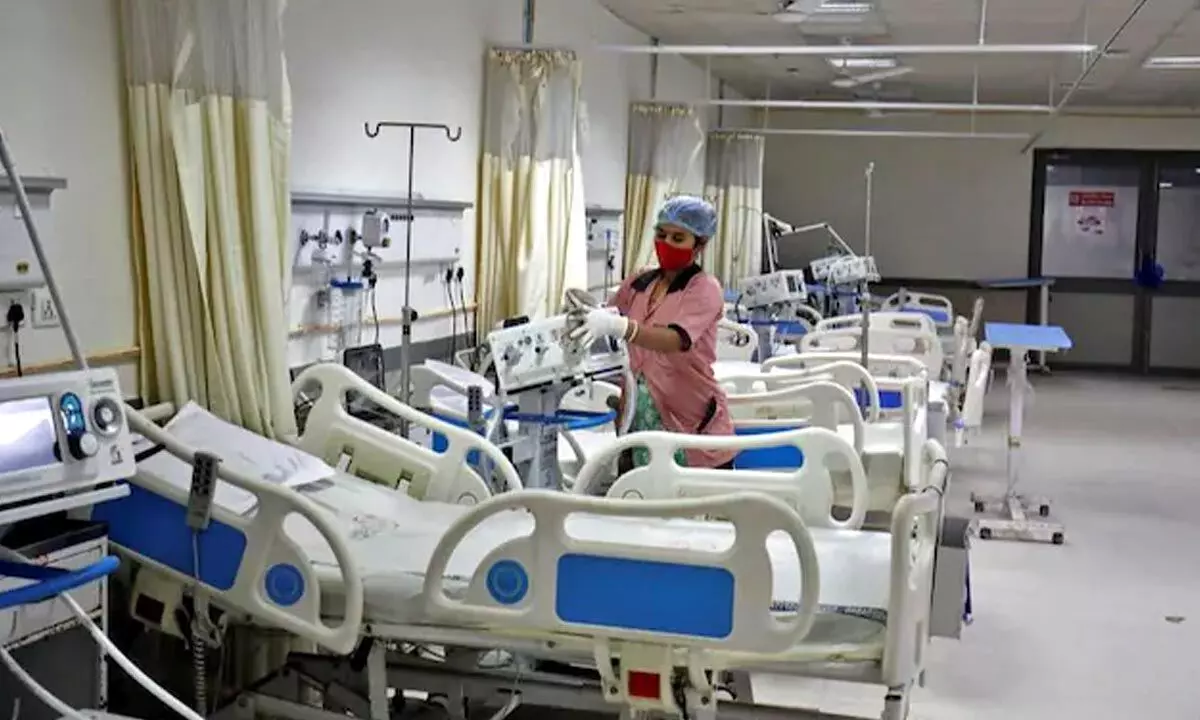Centre's new policies to reduce India's reliance on imports of medical devices
The new National Medical Devices Policy as well as other incentives offered by the Indian govt will both reduce reliance on imports of medical devices and create employment opportunities in the sector
image for illustrative purpose

Close on the heels of the announcement of the National Policy for Medical Devices, the central government also came out with another policy decision as it announced the Uniform Code for Medical Device Marketing Practices, which was aimed to curb the unethical marketing practice of bribing of doctors by the medical devices companies and marketers
A slew of new policies and incentives announced by the central government last year will definitely reduce the country's reliance on imports of medical devices. The new National Medical Devices Policy as well as other incentives offered by the Indian government will both reduce reliance on imports of medical devices and create employment opportunities in the sector. Shortages of medical supplies during the Covid-19 pandemic have pushed the Indian government to promote domestic manufacturing of medical devices as well as other medical products. India was among the top three medical devices markets in Asia-Pacific in 2021.
In a major policy initiative to boost the sagging morale of the medical devices industry in the country, the central government had come out with the National Policy for Medical Devices which was primarily aimed at reducing the country's dependence on import of high-end medical devices. By bringing out the National Policy for Medical Devices, it is obvious that the government wanted to build an enabling ecosystem for medical device manufacturing and research within the country and create a robust regulatory and skilling framework to ensure the quality and safety of these life-saving products. In the policy, the government has noted that the medical devices sector in India suffers from a considerable cost of manufacturing disability vis-à-vis competing economies, inter alia, on account of lack of adequate infrastructure, domestic supply chain and logistics, high cost of finance, inadequate availability of power, limited design capabilities, low focus on research and development (R&D) and skill development, etc.
So, the new policy is focused on systematically nurturing and developing the medical devices sector to realize its true potential. Unlike many other industries, the medical devices sector is an intrinsic sector and is highly capital and technology-intensive. It has long gestation periods and also requires constant training of healthcare workers to adapt to these new technologies. So, the government has explained several measures to promote medical devices manufacturing in India.
Close on the heels of the announcement of the National Policy for Medical Devices, the central government also came out with another policy decision as it announced the Uniform Code for Medical Device Marketing Practices, which was aimed to curb the unethical marketing practice of bribing of doctors by the medical devices companies and marketers. Both these policy initiatives were long overdue for the fledgling medical devices sector in the country. Introduced in 2022, the National Medical Devices Policy has started making waves. For example, the state government of Uttar Pradesh has recently initiated steps to encourage medical devices manufacturers to begin production of high-end medical devices. While no specific areas have been announced as of yet, diagnostic imaging devices could be a key area of interest, from the point of view of both the government and manufacturers. The domestic devices are likely to gain investment in the coming years, as these are being used increasingly in labs and hospitals. The domestic manufacturing of high-end medical devices is expected to support India's aim of becoming a manufacturing hub. The UP government has announced a list of incentives, including subsidies on capital interest; incentives on air cargo, zero waste, and skill development; reimbursement of State Goods and Services Tax (SGST), and a patent filing fee. These incentives will be given to companies setting up units in the state's first Medical Devices Park. The state government has also offered industrial plots under this scheme at a lower cost. Definitely, the UP government's incentives, and the increased availability of skilled local labor, will help the state become a preferred manufacturing destination for medical devices in India.
Besides, in yet another step in right direction, the central government had announced another scheme - the Scheme for Promotion of Medical Devices Parks - last year to promote domestic manufacturing of medical devices. Under the scheme, four medical devices parks have been approved in different states for promotion of medical devices. The four Medical Devices Parks are now being set up in Himachal Pradesh, Madhya Pradesh, Tamil Nadu and Uttar Pradesh which will result in development of a total of around 1,326 acres of area attracting a proposed investment of around Rs 1,221 crore. Out of this, the central government will provide a maximum grant-in-aid or Rs 400 crore (Rs 100 crore each) for the four projects while the rest will be borne by the State governments. It is a fact that at present, nearly 80 per cent of the medical devices sold in the country are imported, particularly the high-end medical devices. The Indian medical devices companies have so far typically focused on low-cost and low-tech products, like consumables and disposables, leading to a higher value share going to multinational companies, especially the US-based companies. It was under this background, the Indian government has come out series of new policies to reduce India's import dependence from 80 per cent to nearly 30 per cent in the next 10 years, and become one of the top five global manufacturing hubs for medical devices by 2047.
(The author is a freelance journalist with varied experience in different fields)

